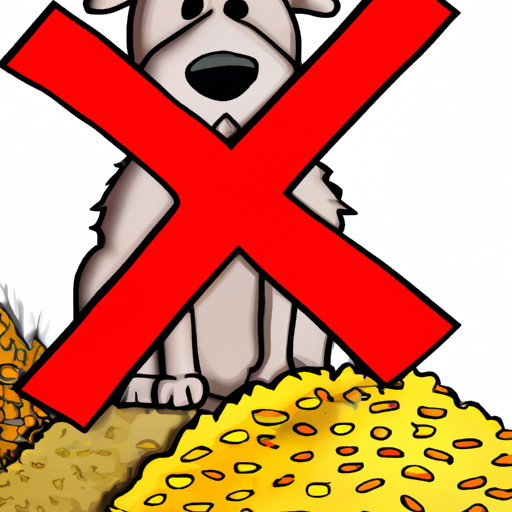What’s the Deal with Dogs and Grains?
You might have noticed a trend in the world of pet food lately. The focus is shifting from traditional dog foods to grain-free diets. You, as a caring pet owner, might be wondering what’s behind this shift. Is grain really bad for dogs? After all, you want to provide the best care for your furry friend.
The truth is, while some dogs might have grain allergies or intolerance, not all dogs do. However, it’s crucial to understand the potential issues grains can cause in some dogs, and that’s what we’re going to explore in this article.
The Potential Problems with Grains
Let’s dive into the reasons why some dogs might have a hard time with grains:
-
Allergies and Intolerances: Some dogs can develop allergies or intolerances to grains, leading to symptoms like skin irritations, digestive issues, and even behavioral changes. It isn’t always easy to diagnose these conditions, which can lead to chronic suffering for your pet.
-
Nutritional Imbalance: Grains are often used as filler in dog food. While they do provide some nutritional value, they can also lead to an imbalance in your dog’s diet if they make up a large portion of it. Dogs need a varied diet rich in proteins and fats, which grains can’t provide in sufficient quantities.
-
Digestive Issues: Dogs, like their wolf ancestors, have a digestive system designed to process meat. Grains can be harder for them to digest, and in some cases, this can lead to digestive issues like bloating, gas, and diarrhea.
| Potential Issues | Examples |
|---|---|
| Allergies and Intolerances | Skin irritations, digestive issues, behavioral changes |
| Nutritional Imbalance | Lack of proteins and fats |
| Digestive Issues | Bloating, gas, diarrhea |
The Grain Controversy
While some argue that grains are bad for dogs, others claim they play a vital role in a balanced diet. So, you might be stuck in a dilemma of what to feed your beloved pet. Remember, each dog is unique, and what works for one might not work for another.
It’s always best to consult with your vet before making significant changes to your dog’s diet. They can guide you based on your dog’s specific health needs and preferences.
How to Transition to a Grain-Free Diet
If you’ve decided to transition your dog to a grain-free diet, it’s important to do so gradually. Here’s a simple step-by-step guide:
- Start by mixing a small amount of the grain-free food with your dog’s current food.
- Gradually increase the amount of grain-free food over a week or two.
- Monitor your dog’s reactions throughout the process. If they show any signs of discomfort or adverse reactions, consult your vet immediately.
FAQ
Q: Are grains bad for all dogs?
A: No, not all dogs have issues with grains. Some dogs can digest grains without any problems.
Q: How can I tell if my dog is allergic to grains?
A: Symptoms can include skin irritations, digestive issues, or behavioral changes. If you suspect a grain allergy, consult your vet for a proper diagnosis.
Q: Is a grain-free diet healthier for my dog?
A: Not necessarily. It depends on your dog’s individual health needs and dietary requirements.
Remember, when it comes to your dog’s diet, there’s no one-size-fits-all solution. Always consider their unique needs and consult with a vet before making any significant dietary changes.



